General Notes On Designing A Three Foot Wide Vegetable Bed
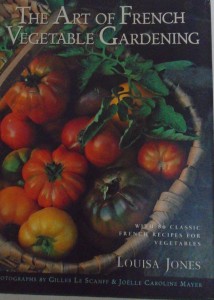 …in the North Americas. This is fun. I love a long distance garden design to play with. I have a friend (well I have never met her, but as she appears in my home at least twice a week on her fab website, I feel close. I know her cats’ habits; how much closer can you get?)
…in the North Americas. This is fun. I love a long distance garden design to play with. I have a friend (well I have never met her, but as she appears in my home at least twice a week on her fab website, I feel close. I know her cats’ habits; how much closer can you get?)
I’m not sure if K is coy, so I’ll keep it anonymous.
She was musing on the art of the English or French vegetable garden style in a front garden setting. And as I have been gardening in France for eight years now. And have a very large potager, I thought I might wade in with a few suggestions.
I also lived in England for twenty years and there encountered what many people would call Cottage Garden style. That great busy flowing garden packed full of plants in spring and summer with colour and foliage every where you look. It works. Sometimes. But rarely all year round.
More often than not it is a garden style that has evolved. Rather than a considered space. The school of ‘I love this plant, I bought it, I plonked it in the ground. I might move it if it grows too big or is crowded out, but it pleases me.’ And it never gets moved. And shrubs rarely get pruned. Self seeders abound.
It can work in a garden. But in a front garden where you have developed a rather pleasing harmony with your planting it is risky to let it all hang out. 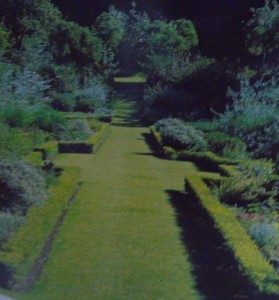
There are many types of French potager. And Louisa Jones is the doyenne of charting its development in France through her sumptuous books. (And you have to love a book where you realise you spend more time ogling the pictures than actually closely reading the text. Garden porn.)
Louisa lives a few hours drive south of me here in the Ardèche and we are friends. So I hope she won’t be cross that I have included some shots of her book which is sadly out of print. I would much rather you all track down her books and buy them yourselves.
But as a general rule, they love a bit of symmetry. And crops in neat rows. But with an added abundance. But it is always controlled.
I like to think that you can enjoy the chaos of the English cottage style and the control of the French one and create something that works. Even in a small space. Controlled chaos.
Now forgive my poor photography and rushed blog. There is a mighty storm here and we are poised to lose our electricity any moment when lightning strikes the electricity lines somewhere within a 20 mile radius.
It’s nature’s way of saying ha ha ha: you think the planet is brilliantly connected via the internet, think again. You can communicate from deepest rural France to somewhere lovely in Canada in seconds; but only if the power lines stay intact.
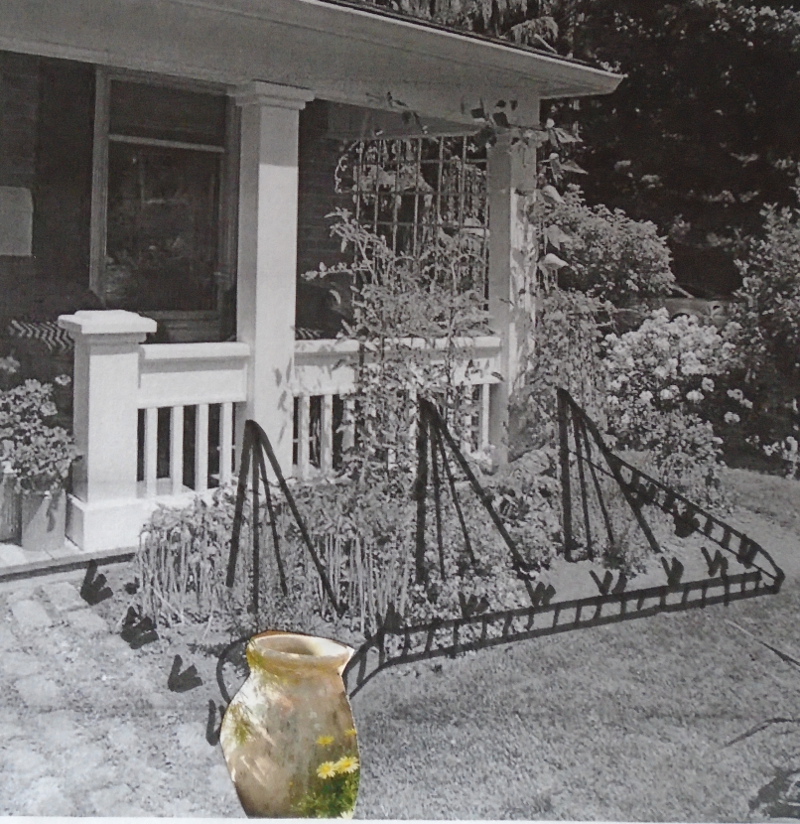 If you take this garden for example I’ll try and explain. Only three feet wide? Not a problem. In fact Joy Larkcom, a wonderful thoughtful garden writer, says that three feet wide is a good optimum width for a bed where you want to grow vegetables.
If you take this garden for example I’ll try and explain. Only three feet wide? Not a problem. In fact Joy Larkcom, a wonderful thoughtful garden writer, says that three feet wide is a good optimum width for a bed where you want to grow vegetables.
You have to picture how you are going to get into the plot to plant, weed and harvest. Kneeling in front of the bed and reaching back three feet is just fine.
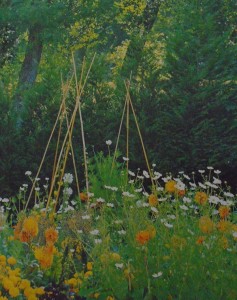 But in a bed this size you do need to create some sort of visual cohesion. This is very easily done with a few key vegetables repeated in their planting (very French) and making sure you have some sort of permanent structure in the beds which will permit a bit of chaos all around.
But in a bed this size you do need to create some sort of visual cohesion. This is very easily done with a few key vegetables repeated in their planting (very French) and making sure you have some sort of permanent structure in the beds which will permit a bit of chaos all around.
The first thing to do is look at the whole picture. It’s a gorgeous wooden house with plenty of strong verticals in the porch and on the side. I think it would be a great idea to keep that chunky squared design in mind when you are creating the bed.
Right now there is no fence or low wall to separate the space from the lawn. In England or in large potagers in France with good rainfall you wouldn’t think twice about planting box hedging as a barrier. It is most pleasing.
But it comes at a cost. First of all this hedge is a living thing. It will need care, attendance, pruning. And it takes away some valuable nutrients from the very plants you are trying to grow behind. It is also expensive. I just don’t think it is necessary in this setting.
I would set about making my own wooden barrier – it needs to be barely one foot high (just enough to cover the sight of any bare earth between crops and to delineate the space. White would work as it is exactly the same as the house behind. And I forgot to make the fence go all the way around to the path as well. Curse this rushed imperative to get it all down before the power goes.
Someone mentioned a low espaliered apple hedging. That would certainly be better than box. At least you can eat your hedge. But work. Work.
White or grey. I have a mania for grey as it shows off plants so brilliantly. On my farm if a planter is made of wood and contains roses, sedums or herbs it is covered in Farrow and Ball Downpipe paint before you can open a bottle of rough red. 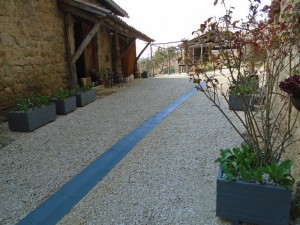
I even painted the rill down the middle of the courtyard I was so desperate for the cohesion. But that’s my mania. You need a bit of control when there are 17 acres of brambles out there, just waiting to invade.
Back to the three foot plot.
Do you extend the bed beyond three feet into a curve? Tricky. Remember those kidney shaped beds of the 1970s? Usually right in the middle of a lawn. Or around a house? Risky to fall into the trap of enlarging the bed just because you can. Look at the straight lines of the house and the path. You could extend the bed at an angle near the path. But I would hesitate about curving the far right end of the planting bed. You can use plants to soften the outline when they spill over the low fence.
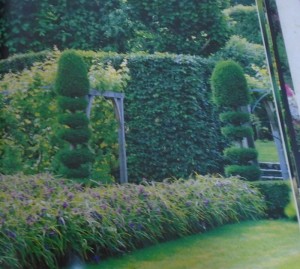 Looking at the porch I can see two lovely zinc planters with geraniums. If you did have the bed curving near the path, why not repeat that look with two larger zinc planters right beside the path? The signature pots. (I grabbed the first garden magazine to hand – Gardeners Illustrated and flipped to the back advertising section. Everyone sells signature pots. They frame a bed beautifully.) And if you have a neighbourhood where you aren’t worried about someone taking off with your prize pots, then they would look lovely planted up with box balls or a display that can take year round interest.
Looking at the porch I can see two lovely zinc planters with geraniums. If you did have the bed curving near the path, why not repeat that look with two larger zinc planters right beside the path? The signature pots. (I grabbed the first garden magazine to hand – Gardeners Illustrated and flipped to the back advertising section. Everyone sells signature pots. They frame a bed beautifully.) And if you have a neighbourhood where you aren’t worried about someone taking off with your prize pots, then they would look lovely planted up with box balls or a display that can take year round interest.
So with the structure sorted, you need to work out what is going on inside the beds. You can grow everything in this space, as long as you sort out the design. In France we repeat things for visual effect. And in this bed I would say that you could start with three tall structures towards the back – such as good solid wigwams for your tomatoes and climbing beans and runner beans. Something a creative carpenter gal would knock up in no time.
Referencing the solid verticals behind, it might be good to try something similar.
When the veg are over for the year, it’s resting to see something good in the bed rather than sorry looking bare earth, (or better still red clover planted as a green manure over winter). If you are in a region that gets snow, they are fantastic in winter.
So you have some control in the form of three solid structures (hopefully repeated on the other side of the porch entrance for pleasing symmetry) and three repeated vegetables means you can do whatever you like with the rest of the space. But with three feet you should think of one foot for one type of plant right at the front; one for the middle where the teepees might go, and one foot behind for the taller flowers and veg. 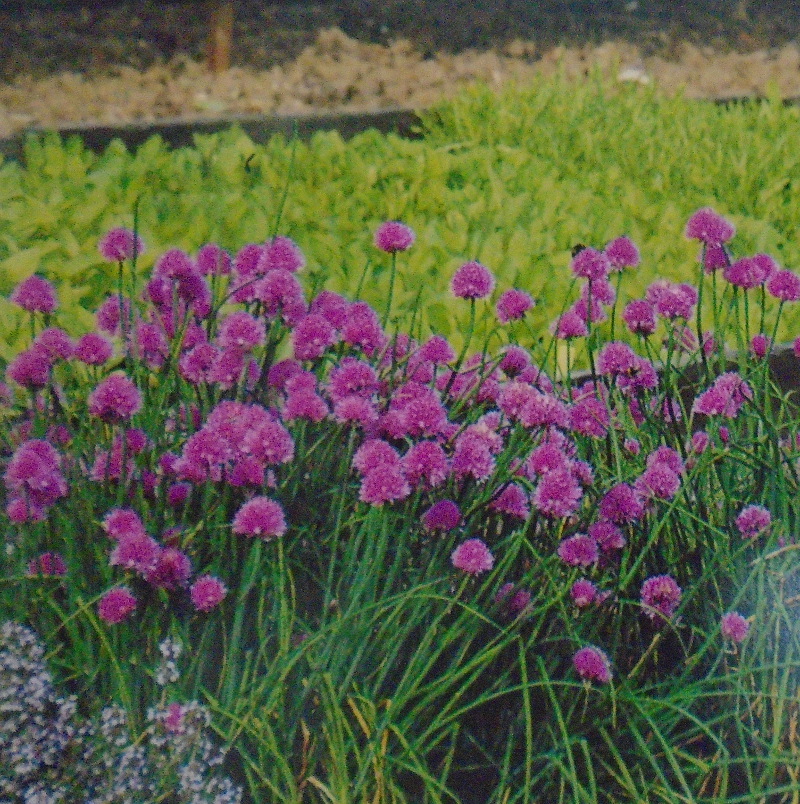
I would opt to grow chives at the very front right behind the low front fence. Not a solid block, but planted every foot or so in small clumps. That way you have cohesion and can plant anything you like in between. The chives are good solid uprights. So you could easily plant your dwarf French beans in between and have them happily spill over the front of the little fence.
In the middle I would plant swiss chard or rainbow chard also in blocks. All the way along. a foot or two apart leaving room in between for all the rest of your little crops like onions, radish, beetroot. The chard have good lush leaves and grow quite tall (taller than the chives) and they would then lead to the three wigwams behind.
For me chard grows for a very long season (unless it’s chomped by deer) and some years I can even overwinter it. 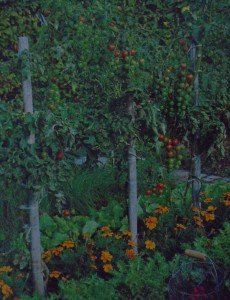
Behind the wigwams is where I would experiment with tall sunflowers, tall cosmos and a few lettuce that you will let bolt and then self seed for next year.
And to finish off the design, a good cover of mulch over the whole bed early in Spring.
I haven’t made time to do lots of detailed drawings or planting plans. But K is a great veggie grower as we have seen from her community garden.
And we all look forward to the blog posts on how to build some fantastic wigwams and the low fence. I for one need a carpentry lesson. And some lessons on how to sketch out ideas neatly in my notebook.
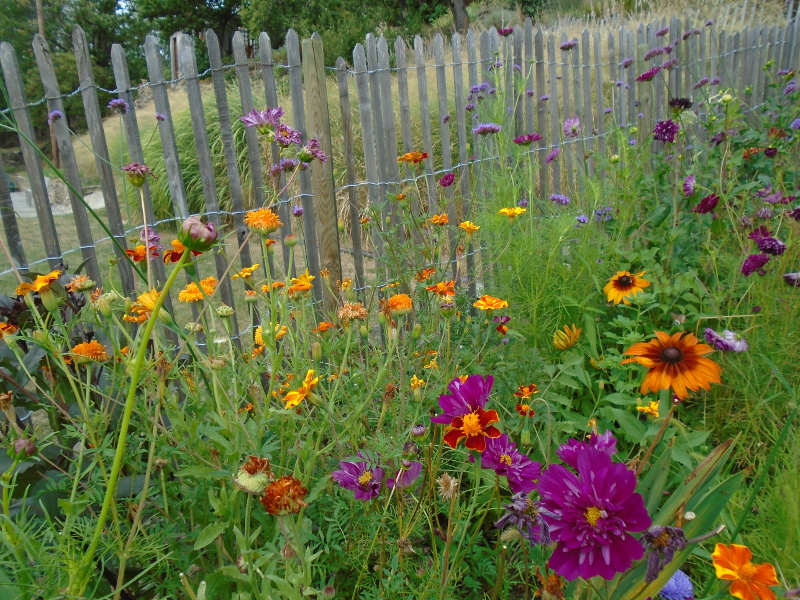
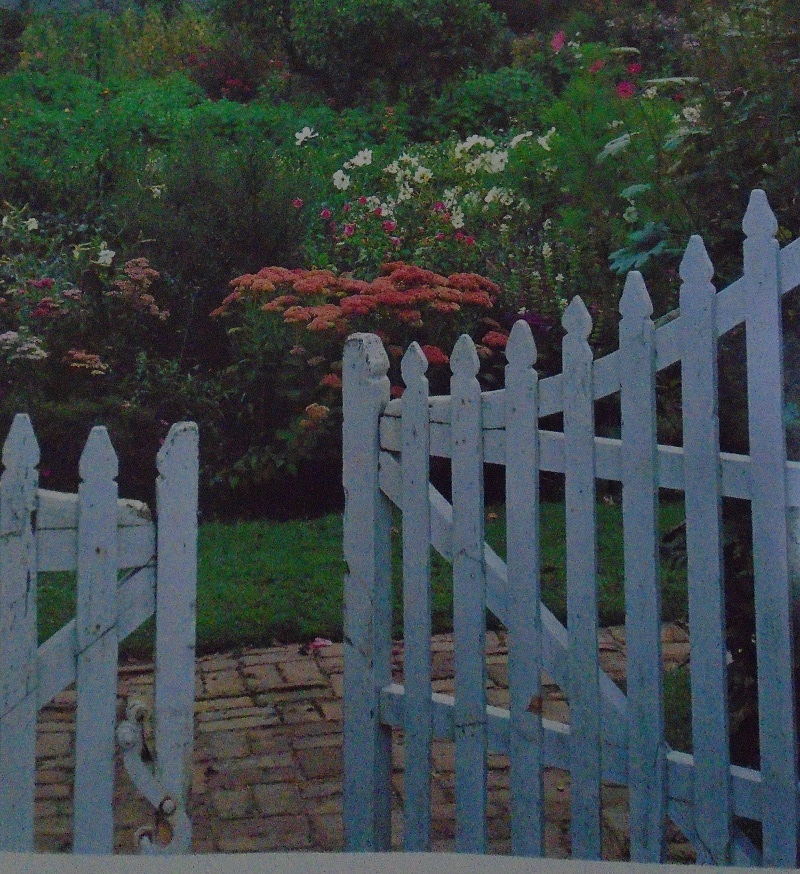
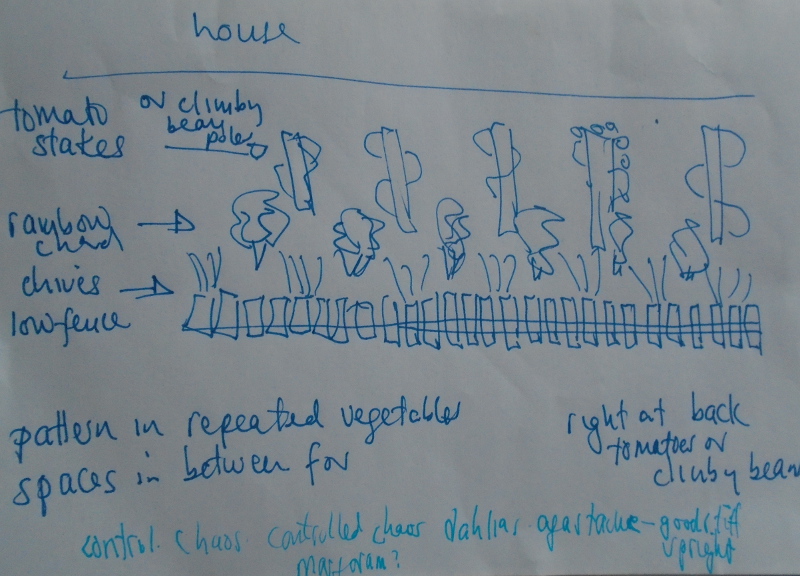
14th August 2015 @ 4:25 pm
I loved this post because I found your site linked through “K’s” site. (Although I’ve never heard coy used as an adjective for her.) I think it is great that you were willing to take the time to suggest some French pottage (?) options for her. As a city dwelling, gardening want-to-be, I am enjoying living vicariously through both of your websites.
14th August 2015 @ 7:20 pm
Hi Kelly, yes I did chortle when I decided to call Karen ‘K’. Very coy of me indeed. It’s a minefield when it comes to learning about website etiquette. I thought it wise to err on the side of anonymous. I’m so glad you enjoyed the post. Best wishes Lindy
17th August 2015 @ 4:15 am
It’s me. Coy Karen, lol! I have read this post 3 times now! I read it then go outside and look at the yard. Then I decide yes or no to things, then I come back in, re-read the post and go back outside and change my mind. I think your idea about delineation of the beds is spot on. The only problem I have with straight lines for the beds is the side beds (which are a continuation of the front beds) are curved. And I really love the curved side yard. It feels a big magical. My problem, my BIGGEST problem is … I want to live in France, lol. I love your house, your gardens, it’s all very rustic sophisticated. It’s perfect. I love that little bit of wild, so I’m afraid the white border fences will end up feeling cute in my small yard. I am many things but cute is not one of them. On the other hand what you’re suggesting is probably exactly what I should do based on the house/porch. I really do need to keep things as neat/tidy out there as possible because the front of the house, including the porch isn’t symmetrical. So I’m already thrown off by that. Plus there’s the wild tomatoes that are 8 feet high, the visual craziness of all the porch spindles and pillars, the out of control salvia and the ugly bare earth. I’m not sure why I never though to mulch the front but I didn’t. Wait. Yes I do. It’s hard to add in compost at the end of the year, that’s why. I’m sure I can figure out a way around that. I’d have to get plain brown compost that hasn’t been coloured obviously. (please note how I spelled colour properly) I have rainbow swiss chard in the garden right now and it’s one of my favourites. And what is a signature pot?! Also how much space between plants? Should they be touching? omg. This is too much. Thanks so much Lindy! ~ karen
17th August 2015 @ 5:43 pm
Don’t you love a garden design dilemma. I will make the time tomorrow to reply. I just need to move house (which is code for recycle and shred way too much STUFF) and find lots of examples of signature pots for you. Watch this space.